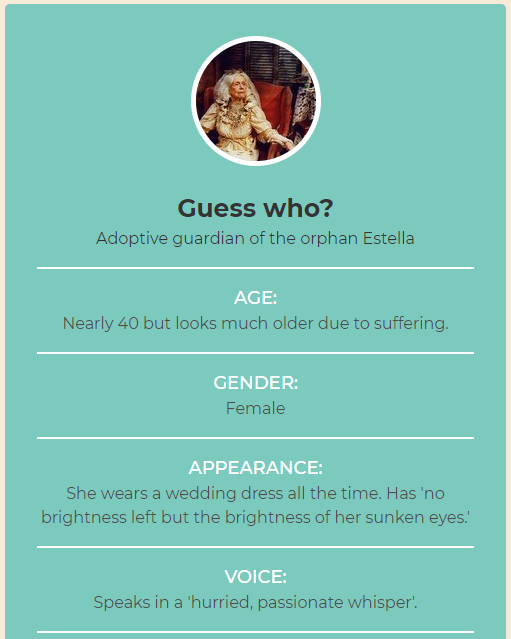Think back to the first time you met someone you now know well. Can you remember what you noticed about them first? Describing characters' first appearances effectively is key to building characters who linger in the mind. Here are 6 tips on how to describe your characters at first introduction:
To introduce characters descriptively:
- Weave setting into first descriptions
- Use contextual character description
- Show sameness and difference
- Use movement and comparison
- Choose descriptive adjectives
- Include descriptive elements that leave questions
Let's unpack each of these suggestions in detail:
1. Weave setting into first descriptions
When we think of character description, we often think of visual signs that identify the character in isolation. 'She had grey hair, a slight, angular build, and kind eyes that made her angular features seem rounder'.
When we meet people for the first time, we don't always make a list of their features in our heads like this.
Bringing your setting into the first introduction to a character is a useful way to make the description feel a little more relevant to the unfolding scene. For example, you could write the above description like this:
He was about to enter the saloon when a woman caught his eye through the window. She was handing a patron a glass of water. The reflective afternoon glare meant all he could make out was a streak of grey in what looked like black hair. Entering, he glanced over as she turned to greet him. She had a slight, angular build and kind eyes that made her angular features seem rounder.
Although the first introductory character description is not that bad, weaving in setting this way has merits, too. It creates:
- A gradual build-up of descriptive detail, in tandem with getting a character to another setting within the story (the inside of the saloon)
- A stronger sense of looking through the male character's eyes and seeing what they see - stronger showing (instead of telling)
Weaving in other elements of your story when describing characters for the first time creates context:
2. Use contextual character description
There are many types of description.
The first type of character description we could call 'shopping list' description. It's an itemized list of character attributes. As though the author has asked 'What details make up how a person looks?' and ticked each off, one by one. 'They have X eyes, Y hair and Z body.' This may work for some descriptions. Sometimes a quick, simple description makes sense.
Contextual description, however, makes characters' appearances relevant to the unfolding action. This is effective because we don't pause and step out of the scene to turn a character around and notice each physical detail, as though we're designing a video game avatar. The description flows into the surrounding scene more seamlessly.
On introducing a character who has unusually piercing blue eyes, you could write 'He had unusually piercing blue eyes'. Yet you could also make this relevant to the action and thus contextual. For example, describing the same character on a blind date:
Only when they sat down at a two-seater in the corner did he take off his shades. The intense blue of his eyes took her by surprise - there was nothing else Nordic (or particularly surprising) about his appearance.
Or mid-dialogue:
She looked away, embarrassed.
"You can't even look at me," he laughed. "You're blushing!"
"You're mistaken, that's my rosacea..." She tried to look annoyed as he sat there chuckling, but caught his eye and his expression made her start to laugh despite his teasing. There were deep laughter lines around his intense blue eyes.
Here, contextual character description creates two effects. In the first example, it adds an element of surprise. In the second, it's woven into the flow of dialogue, and tells us more about the character's personality (that he's a tease and habitual joker). First descriptions like these give appearances while still keeping us involved in unfolding interaction.
[Use the Character section of Now Novel's story outlining dashboard to brainstorm a diverse cast for your story.]

3. Show sameness and difference
When you describe a character for the first time there are two aspects of their persona you can show. One is how they fit into their environment. For example, you might show a bartender drying glasses with a towel. Details such as these show the standard symbols readers might expect of specific character types.
Describing a character in terms of how they are the same as others (for example, giving your detective the look, clothing and mannerisms of a classic detective) helps to build a recognizable identity.
Yet it's also useful to think of how your character's appearance could depart from norms, and make their first introduction unexpected or surprising. A crack detective might be surprisingly disheveled. For example, you could write:
He looked as though he couldn't even solve which shoe to put on which foot, never mind a complex case like this. Wore a scruffy stained shirt, half tucked in. She had half a mind to ask him for some identification.
Describing the ways characters aren't how other characters expect is one way to make descriptions linger in your reader's mind.

4. Use movement and comparison
Physical appearances alone can give a detailed impression of a character. Yet using every device available to you gives you a broader palette to work with as you create character portraits.
How characters move tells us a lot about them. For example, a shifty character might jump or start easily, or look nervously to a specific spot from time to time.
Take, for example, a man who has just moved into a neighbourhood and has gone to his neighbour's house to introduce himself, not knowing the man has only just murdered someone:
Paul paused for a second, a queasy feeling washing over him as the man, who'd introduced himself as 'Thomas', stood awkwardly blocking the lounge door. Thomas ushering him towards the kitchen. He felt as though he was being herded. But then he reminded himself that some people were just like this. Just have a more jittery manner (or poorer sense of personal space). He told himself he was reading too much into it all. And yet something felt a little off.
Here, a character's movement tells us something about their personality and mannerisms. It conveys subtext (the unspoken 'truth' behind the events of a scene) without explicitly saying 'Thomas is hiding a body somewhere in his lounge.'
Comparisons also make descriptions interesting. Simile (comparing things using 'like' or 'as') and metaphor (simply saying one thing is another, compared thing) enrich description. We could rewrite the above example:
Paul paused, feeling inexplicably queasy. The man (he'd said his name was Thomas) loomed awkwardly in the lounge door, like a bad omen. As though he was barring Paul's way. He hurried Paul past him, towards the kitchen. Herding him, almost, like a Collie dog snapping at the heels of a dawdling sheep... Paul thought he was just reading too much into things again.
These changes show how describing characters using movement and comparison add different shades of tone and mood to a scene.
5. Choose descriptive adjectives
Adjectives or describing words give us great variety. Instead of saying a character is 'tall', you could say 'giraffe-like' (for comparison) or else 'spindly', 'statuesque', 'Amazonian', 'enormous', and so forth. Descriptions that use the modifier 'very' are a little lazy and don't tell us much that is specific about the character.
A word like 'spindly', by contrast, tells us that a character is both thin and tall, and suggests weakness, a sense of being breakable. The word comes from 'spindle', the thin stick of wood in a spinning wheel that holds the thread. A descriptive adjective like this thus contains a rich metaphorical comparison already.
How to develop a richer character description vocabulary
Choose a simple adjective such as 'thin' or 'short'. Use a thesaurus such as this one to find other adjectives that mean the same thing. Use an etymology search engine to find out the origin of each adjective you like. Where does the image, the comparison, come from?
6. Include descriptive elements that leave questions
Describing characters' first appearances is an opportunity to create intrigue and mystery. Why does the woman living by herself in a dark, candlelit house wear a wedding dress always? Why does the man with shifty eyes keep looking over to the closed TV cabinet in the lounge when he thinks his visitor isn't looking?
When introducing characters, you could mention mysterious elements of their appearance such as:
- Unusual dress
- Different movement (e.g. a limp, tics)
- Strange mannerisms (e.g. constantly checking a phone with a worried frown)
- Unexplained signs or marks (e.g. cryptic tattoos or scarring)
Dipping into the above suggestions when you introduce characters for the first time will help you create more detailed, individual characters.
Use Now Novel's story outlining dashboard to build detailed character profiles and outline characters' goals, roles, appearances, backstory and more.









